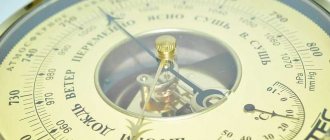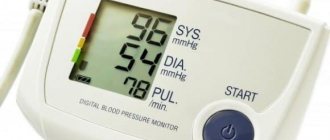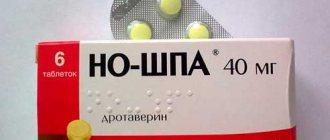There are many indicators to assess the state of the body in medicine. One of the most important is the upper and lower pressure of a person, thanks to which the state of the cardiovascular system is assessed. Measuring and monitoring blood pressure allows you to prevent the occurrence of a heart attack, stroke, as well as timely identify a number of other acute processes that can lead to complications and even death.
What is blood pressure?
This terminology is used mostly in medicine, since it is one of the characteristics of the general condition of the patient’s body. Due to the fact that blood pressure clearly characterizes the performance of the central organ, it is considered cardiac.
The tonometer reading has several meanings :
- Systolic is the first highest value recorded.
- Diastolic is the second lower limit.
The first value is recorded at the greatest volume of blood passing through the left cardiac ventricle, and the second number is measured when the lower value is when diastole is relaxed. At this stage, blood is pumped to the right side of the heart.
Each person's blood pressure is not expressed in the same way, because it depends on :
- Age category.
- Gender.
- Health level.
- Environmental conditions.
- Harmful tendencies.
- Diet.
Treatment of high diastolic pressure
Sometimes blood pressure can be isolated, or more precisely, this is what they say when hypertension is established in relation to only one of the indicators. If the lower value is elevated and the upper value is normal, this is always a pathology.
Such a marker may indicate:
- Insufficient functionality of the kidneys and the entire excretory system of the human body;
- Endocrine pathologies;
- Heart atrophy;
- Osteochondrosis;
- Problems with cerebral blood supply or blood flow in the lungs.
In this condition, the patient usually has a severe headache, a feeling of heaviness in the chest, the pulse becomes rapid, and shortness of breath occurs.
If the numbers rise to 100 units, measures need to be taken to reduce the pressure. Therapy must be comprehensive and professional. No self-medication!
Possible prescriptions may include ACE inhibitors, Ca channel blockers, beta blockers and diuretics - i.e. standard medications for hypertension.
Why do you need to know the values of upper and lower blood pressure?
Those who have experienced heart complications first-hand understand that monitoring the upper and lower indicators is not a whim, but a necessity .
High or too low values of the upper and lower readings of the measuring device indicate that a person is at risk of developing very serious illnesses.
If the doctor suspects a patient has a tendency to such manifestations , then first of all, regular control over blood pressure is established by checking the tonometer readings several times throughout the day .
Normal difference between indicators
In a healthy adult, normal upper pressure ranges from 100-140 mmHg. Art., and the lower within 60-90 mm Hg. Art. The normal difference between the upper limit and the lower limit is 40 units, with an optimal blood pressure value of 120/80. Taking into account the age factor, the permissible difference between the numbers can range from 35 to 50 units.
Important!
An increase in low and high pressure with a normal difference indicates excessive strain on the heart muscle. A decrease in data, on the contrary, indicates a slower functioning of the heart muscle and blood vessels.
To obtain the most accurate parameters, measurements must be performed in a calm and relaxed state on both hands several times with a difference of several minutes. The difference between the received data should not exceed 5 units.
Every person should know the working indicator of their blood pressure; it is especially important to monitor emerging deviations in patients with hypertension or hypotension.
How to measure blood pressure correctly?
A specialized mechanism - a tonometer - will help record the upper and lower pressure readings.
A standard tonometer includes:
- Camera - a cuff for wrapping the shoulder with connecting hoses.
- Pressure gauge with scale to record each reading, upper and lower edge.
- A cylinder for supplying air to the cuff.
now very popular . It differs from the usual one in that instead of a pressure gauge, there is an electronic display on the tonometer. It shows not only blood pressure and its upper and lower thresholds, but even a person’s pulse.
Most doctors still prefer the classic version, since it has practically no errors, and the electronic counterpart of the device is highly dependent on batteries and therefore the correct value at the upper or lower limit may not always appear on the display.
The sequence of recording blood pressure at the upper and lower limits with a tonometer looks like this:
- Attaching the pneumatic cuff to the shoulder, along with its placement, affects the accuracy of the pressure readings. Therefore, it is very important to follow all the parameters when applying the cuff, we will talk about them below.
- While squeezing the bulb, introduce air into the cuff. To achieve an optimal result , it is necessary that the needle on the scale points to a value that is 30 mm higher than the patient's upper norm.
- Once the upper limit is reached, the required amount of air will be pumped in. After this, you need to open a special valve , which will release the air back.
- Using a phonendoscope, listen carefully to the manifestation of tones. A clear and bright tone after a quiet and inexpressive noise shows the first - upper value. After the complete disappearance of any tones, the lower limit is fixed .
Useful video:
What does a decrease in DD indicate?
If high lower blood pressure is observed mainly in old age, then its reduced levels can also occur at a young age. If the DD shows a level below 70 mm Hg. Art., this means that the heart muscle is quite weak and does not cope well with its functions of pumping the required amount of blood, as a result of which the patient experiences the following symptoms:
- nausea;
- decreased concentration;
- forgetfulness and fatigue;
- weakness and dizziness;
- cold extremities;
- body temperature is below normal;
- darkening of the eyes;
- dyspnea;
- small spots before the eyes;
- gastrointestinal disorder.
Quite often, the appearance of low DD values does not depend on the presence of pathological processes in the body and is detected suddenly. This may be due to both heredity and the individual physiological characteristics of the patient.
As for serious health problems, a decrease in the DD level below 80 mm Hg. Art. depends on the following issues:
- renal or heart failure;
- osteochondrosis;
- VSD;
- tuberculosis;
- anemia;
- ulcer;
- infectious inflammation;
- hormonal disorders;
- stress and depression;
- exhaustion;
- lack of vitamins B, C, E;
- side effects of medications;
- sudden climate change.
When you contact a doctor, he prescribes the necessary tests and only after that prescribes treatment. In old age, reduced DD depends on the deterioration of the elasticity of blood vessels, as well as the appearance of cholesterol plaques on their walls. This condition of the arteries significantly increases the risk of developing complications of pathological conditions of the organs of the cardiac system, since it causes an increase in DM and a decrease in DD. All this can cause the development of a disease such as cardiac ischemia, which often leads to death.
Also, low DD in old age is responsible for the appearance of factors that cause the occurrence of Alzheimer's disease.
Reduced DD values can cause dehydration of the body, which in old age often occurs as a result of atherosclerosis, leading to deterioration of the elasticity of blood vessels.
Reduced DD values during pregnancy are of considerable importance, because as a result of these changes, the blood supply to the fetus may be disrupted. The result of this condition can be a miscarriage, as well as a neuropsychic or physical developmental delay of the unborn baby.
Rules for using the tonometer
We recommend that you read
- When attaching the pneumatic cuff to the arm, should be adjusted to the volume of the shoulder.
- The measurement cannot be taken by a person who has recently performed any physical work due to the fact that the results of upper and lower blood pressure will be completely distorted .
- The digestion process requires some energy from a person and this means that measurements show inaccurate results after eating, you must wait at least half an hour .
- The person undergoing pressure measurement should be in a relaxed state, sitting at the table and the arm without hanging at this time lies in a horizontal position on the table.
- When choosing a place for taking measurements, you should also take into account the dimensions of the table, namely its height. An appropriate height is considered when the cuff is level with the fourth hypochondrium.
Small difference between blood pressure readings: reasons, what does it mean for health?
If the difference between the lower and upper readings is small, and the pressure is very high, then this may be the result of the development of hypertension. Causes:
- Increasing blood circulation volume
- Increased vascular tone
- Disturbances in the endocrine system
- Cholesterol on the walls of blood vessels
- Increased work of the heart muscle
Small difference in pressure readings
If the gap between the indicators is small and the pressure is low, this means that:
- The heart muscle works poorly
- Vascular elasticity is low
- Blood circulates little in the vessels
Women often experience low blood pressure during their menstrual periods. During this period, large blood loss occurs, which reduces the amount of fluid in the vessels. Also, if the kidneys malfunction and do not produce enough renin, a person may experience a decrease in blood pressure.
Low blood pressure is also common during fasting or in people with anorexia. All this happens due to a decrease in vascular tone. In case of poisoning and excess toxins, the body can enter a state similar to shock, which will lead to a decrease in performance.
What affects the top and bottom numbers of pressure readings?
We have already touched on this topic a little earlier. It is rare to find the same blood pressure in two different people. The reason for this is the fact that all people are in different conditions and have different physical forms.
| Favorable factors for stable blood pressure | Negative conditions for normalizing blood pressure |
| Regular and healthy sleep | The presence of harmful attachments: frequent drinking of alcohol, smoking and taking harmful drugs |
| Proper diet | Lost daily routine – insomnia, hyperactivity |
| High quality food without being loaded with unhealthy foods | Eating unbalanced foods with harmful contaminants |
| Lack of psychological pressure and emotional outbursts | Stress, emotional overload, overwork |
| Regular sports training | Taking strong medications |
| Comfortable environmental conditions | Negative influence of weather conditions, such as magnetic storms |
| — | Excessive passion for sports |
Don't give in to pressure, or how not to miss hypertension
Prevention of hypertension should be more than just a dry theory on this topic. Preventive tactics apply to those who have a high risk of developing this disease. If, for example, in your youth you suffered from cardio-type vegetative-vascular dystonia, then you are at risk. If you have obesity, endocrine problems, or a family history, start preventing the disease right now.
What do we have to do? First of all, understand whether there is an overabundance of things in your life that lead to constant stress. In some cases, doctors even advise their patients to change their profession. You should quit smoking if this habit is typical for you. You need to seriously take care of your diet, which should be correct, moderate, based on a clear choice of healthy foods and on certain features of the digestive cycle.
It is necessary to control the pressure, both of its indicators. Pay attention to some deviation from the norm, not just by worrying about it, but by visiting specialists. Every fifth resident of Russia suffers from hypertension, and this is according to the most conservative estimates. There are many unrecorded cases that would correct these statistics. It is within your power to avoid joining these sad lists.
Upper and lower pressure - what does it mean?
To clarify the subject of our discussion, we present to your attention the following table:
| Upper designation | Bottom designation | |
| What does it mean? | The resistance of blood at the moment of pumping it from the heart to the vessels | The same as the previous value, only this happens when the heart muscle is at rest |
| Bodies involved in creating the indicator | Peripheral large blood channels, especially the aorta; heart muscle | Network of blood vessels and renal canals |
| How is it designated? | SYS | DIA |
What is he responsible for?
By measuring your upper and lower pressure levels, you carry out a universal diagnosis of the entire body due to the fact that the tonometer numbers characterize the functioning of the vital organs of a person.
But what do the upper and lower indicators say? The previous definition of each of the values makes it clear as follows :
- Upper pressure ( the so-called cardiac or systolic) is closely related to the work of the main organ of the body - the heart. Therefore, any deviations indicate “problems” in this area.
- The lower pressure indicates the condition of the renal arteries and their patency. Also, this indicator can be used to preliminarily judge the presence of problems in the genitourinary system of the body.
Video on the topic:
What determines high blood pressure readings?
The cause of elevated upper blood pressure is hidden pathologies or diseases of the main internal organs:
- Excess weight.
- Heart or kidney disease.
- Deviations in the functioning of the adrenal glands or thyroid gland.
- Loss of vascular elasticity.
- The functioning of the aortic valve is impaired.
In the presence of such ailments, high blood pressure develops.
You can judge the problem yourself if you experience the following ailments:
- Regular headache in the occipital region.
- Severe shortness of breath with difficulty breathing, especially after working upside down or climbing stairs.
- Presence of floaters before the eyes.
- Head is spinning.
- Urges of nausea.
Low systolic blood pressure is often caused by normal physical activity. It often appears in the first months of pregnancy. Climate change can also affect changes in the upper pressure indicator.
Signs of low blood pressure are:
- Lack of strength;
- Mood swings; severe irritability;
- Constantly makes you feel drowsy, even if you sleep normally;
- Memory and coordination suffer.
Normal blood pressure
Any indicator of a healthy body has established standards. To determine the deviations of the body, it is necessary to compare the measurement result with the established limit at the upper and lower limits, which is 120 to 80, respectively.
However, this norm is somewhat averaged, since other factors affecting upper and lower pressure must also be taken into account.
| 16-20 | 21-30 | 31-40 | 41-50 | 51-60 | Over 60 years old | |
| Women | 116/72 | 120/75 | 127/80 | 135/84 | 135/85 | 135/89 |
| Men | 123/76 | 126/79 | 129/81 | 135/83 | 135/85 | 135/89 |
How is pressure measured?
You can find out about high or low blood pressure using a special device - a tonometer. Now there are many variations of it, but the classic one remains the manual one, consisting of a cuff, pressure gauge, pump and stethoscope. To get the correct blood pressure readings, you should be prepared. Few people know that blood pressure levels are influenced by many factors. For example, when a person wakes up, his blood pressure rises by several units.
In most cases, blood pressure is measured using a special device
Therefore, to get accurate indicators, you should:
- Half an hour before the procedure, avoid eating, smoking, exposure to cold, and physical stress.
- The patient should be in a comfortable position (sitting or lying down). It is advisable for him to be relaxed.
- When sitting, your back should rest on something. The hand on which the indicators are measured is placed at heart level.
- In the supine position, the upper limb is parallel to the body. It is raised a little by placing a cushion or pillow.
- During the measurement, it is forbidden to talk or make sudden movements.
- The position of the body can be changed if several consecutive measurements are taken. The interval between them should be at least 2 minutes.
After preparation, a cuff is placed on the shoulder at heart level. This is approximately 3-4 cm above the elbow. The stethoscope is applied to the middle of the bend of the upper limb. It is in this place that the heartbeat can be heard well.
Using a blower, the cuff is filled with air to 200-220 mm Hg. Art. It should be inflated to maximum at very high pressure. Next, air should be released at a speed of 2-4 mm per second.
You will hear a pulse in the stethoscope. Remember at what indicator the first blow occurred. This will be the top pressure. The sound of the heartbeat in the stethoscope will gradually subside. The last blow is an indicator of the lower pressure.
How is the difference between upper and lower pressure deciphered?
As you may have noticed, the optimal difference between the upper and lower readings is 40 mmHg. This value also has its own formulation - it is called pulse pressure.
From the previous table it can be seen that with age in any person, the gap between the upper and lower indicators may increase slightly of elasticity and firmness by the walls of blood vessels .
Little difference
A similar situation occurs in three cases :
- The upper level decreases.
- Lower pressure increases.
- As a result of a simultaneous decrease and increase in the upper and lower values, respectively.
If this is exactly what happens to you, then there is every reason to visit a cardiologist, because this is the first signal about a disruption in the functioning of the body’s cardiovascular system.
The following diseases can probably be prevented :
- Atherosclerosis.
- Aneurysm.
- Tachycardia and ventricular arrhythmias.
- Cardiogenic shock.
- Iron deficiency.
- Tumors in the kidney area.
- Chronic kidney diseases.
Photos of diseases:
Atherosclerosis
Aneurysm
Tachycardia
Cardiogenic shock
Kidney diseases
But you shouldn’t diagnose yourself - it’s better to contact a specialist who can determine what caused the dysfunction in the upper and lower levels.
Recommended viewing:
What causes the large difference between upper and lower blood pressure?
Exceeding the optimal limit of pulse pressure in scientific circles is called pulse hypertension. This anomaly in the human body is a kind of signal that there is a high danger to health. With such jumps, organs tend to wear out quickly and “failure” ahead of schedule.
Basically, high pulse pressure is caused by the following diseases :
- Increased ICP (intracranial pressure).
- Anemia.
- Stroke or heart attack.
- Tuberculosis.
- Heart block.
Photos of these states:
Increased ICP
Anemia
Stroke
Heart attack
Decoding indicators
What do the upper and lower pressure numbers mean? The patient's blood pressure may be elevated, normal, or low. A value considered excellent for humans is 120\80 mmHg. Art., although the concept of “norm” for people of different ages and gender is conditional. There is such a medical term as “working pressure” - it is measured when you are in excellent health and in the absence of any complaints. For a certain category of patients (elderly, suffering from pathologies of the cardiovascular system), this indicator will be considered normal. By the way, some people may not feel even the most significant changes in blood pressure.
Every person must know what pressure is normal for him. A gradual increase in blood pressure can lead to extremely dangerous conditions - heart attacks, severe kidney failure, strokes, and coronary heart disease. A decrease in this indicator also indicates the development of diseases of the cardiovascular tract and circulatory system. An increase in pressure units is called hypertension, and a decrease in pressure units is called hypotension.
How to evaluate the results of blood pressure measurements? To decipher the tonometer data, a special table is used, adopted back in 1999 by the WHO (World Health Organization).
| Category AD | Upper indicator, mm Hg. Art., (systolic) | Lower value, mm Hg. Art., (diastolic) |
| Norm (determined individually) | ||
| Optimal value | no more than 120 | no more than 80 |
| Relative norm | no more than 130 | no more than 85 |
| Slight increase | from 130 to 139 | from 85 to 89 |
| Hypertension | ||
| Borderline indicator | from 140 to 149 | no more than 90 |
| Mild form (1st degree) | from 140 to 159 | from 90 to 99 |
| Moderate (grade 2) | from 160-179 | from 100 to 109 |
| Severe form (grade 3) | more than 180 | more than 110 |
If the lower pressure does not correspond to the upper one, and their values are in different categories of this table, the highest indicator is considered correct. The optimal level of blood pressure in this case refers to those parameters at which the risk of various diseases of the cardiovascular system with severe and fatal outcomes is lowest. The names “mild”, “severe”, “moderate”, which are given in this table, show the degree of hypertension, and not the nature or clinical course of the pathology.
The regulation of the entire cardiovascular system is carried out by the heart - it is this organ that, by contracting, pushes blood into the vessels and provides a certain level of tension in them. Therefore, the blood pressure numbers will increase the more, the closer the vessel measured by the device is localized in relation to the heart muscle. Typically, the patient's brachial artery is used to record such readings. This vessel is located above the shoulder bone - in the most convenient place for measurement, and its location relative to the heart is the most suitable. That is why doctors consider the indicators obtained in this way to be average or general. The lowest blood pressure values are recorded in the smallest capillaries of the extremities, since these structures are the most distant from the heart.
Reduced lower pressure
Deciphering pressure measurements does not take much time, but in order to make a diagnosis, more thorough diagnostics . Along with this, blood pressure is a kind of alarm in order to take measures to eliminate any ailments that have arisen.
So, when the lower limit of blood pressure is underestimated, hormonal levels require attention, and it is also worth checking the blood for the presence of viruses.
A low lower value of the tonometer can cause an allergic reaction or poisoning and dehydration of the body.
Symptoms of Low Blood Pressure
When an adult’s blood pressure remains at 90/60 for a long time, we can talk about the presence of hypotension.
Hypotension is usually accompanied by symptoms such as:
- drowsiness;
- irritability;
- constant weakness and fatigue;
- fainting;
- feeling of lack of air;
- swelling;
- memory impairment.
The presence of low blood pressure does not carry such serious complications as hypertension. But very often after 40 years, hypotension gives way to hypertension. Therefore, you should constantly monitor your blood pressure and lead a healthy lifestyle.











